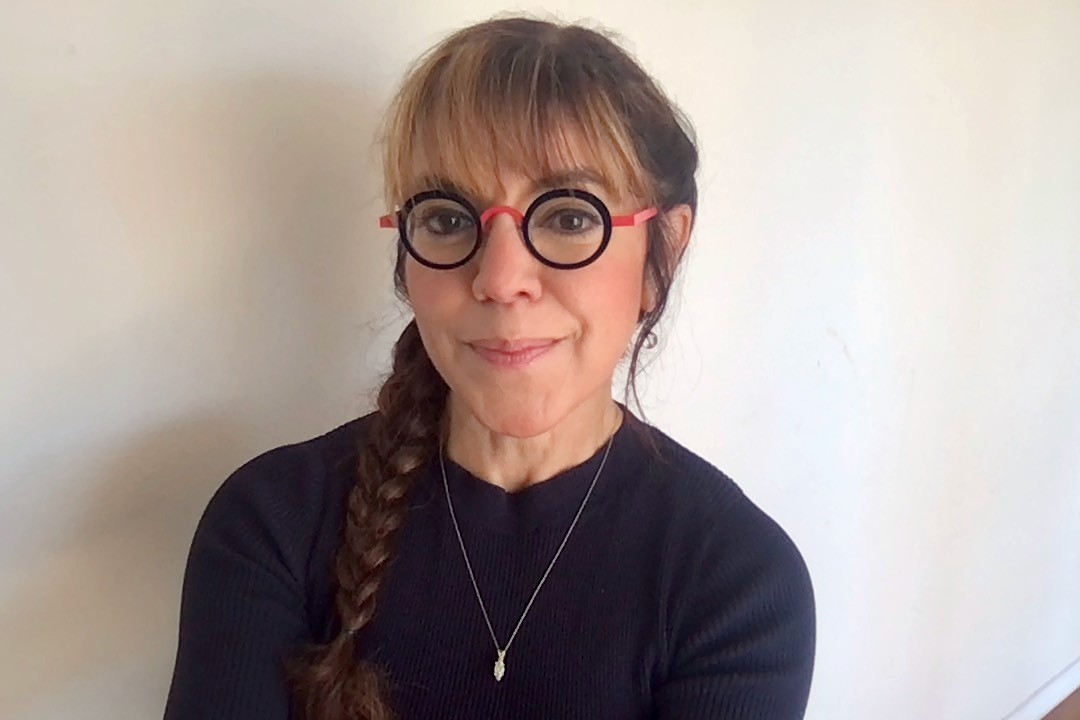Young Latinos are making waves, driving change not only within their community but across society. While Latino millennials initiated this shift, Gen Z is amplifying it—challenging outdated perceptions and reshaping the narrative around their identity. Frustrated by a lack of representation and tired of stories that don’t reflect their reality, this generation is determined to inspire a new outlook that recognizes their dynamism and influence.
MISCONCEPTION #1: Latinos are mostly immigrants
Almost all Latino youth under age 18 (94%) are American-born and raised, compared to 46% of those age 35 or older. It used to be that there was a language barrier, and immigrants had different traditions and values than the U.S. mainstream. But young Latinos are native born English speakers. Latinos are already a quarter of Gen Z and Gen Alpha, the largest diversity segment, and they will represent 30% of these generations by 2040, shaping not only their futures but influencing the remaining 70% of the population as they continue to shape the changing culture.

Source: US Census ACS 2022
Why It Matters: The future of U.S. society will become more intimately tied to the Latino community. Young Latinos will be more integrated into American culture than ever before, even as they maintain their Latino identity. In years ahead, Latinos won’t just be consumers of culture, but shapers of it as well.
MISCONCEPTION #2: Latinos represent a niche market
Far from being a niche, young U.S. Latinos are coming of age at a time when Latin culture is exploding onto the global stage. From the food and music to the language and pop culture, there’s a growing fascination and widespread embrace of all things Latino. Indeed, during the first half of 2024, Latino music was the fastest- growing streamed genre in the U.S., increasing by 15% from 2023 and outpacing growth in core genres like pop and rock.
This cultural momentum is giving young Latinos a renewed sense of pride and confidence, encouraging them to view themselves and their futures in a bold new light. No longer constrained by outdated stereotypes, they are leveraging this moment to expand their influence, grow their networks, and amplify their voices far beyond the Latino community. Their size alone makes them a substantial market, breaking all definitions of niche just by the numbers. Add their cultural clout and you have a new, highly influential cohort coming into their own.
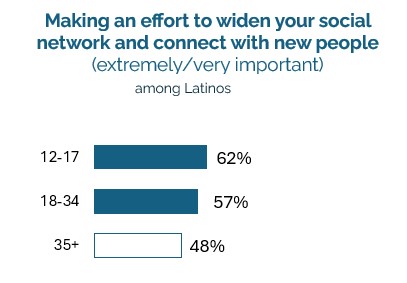

Source: Kantar U.S. MONITOR 2023, 2024 (DEI Study)
MISCONCEPTION #3: Latinos are humble and content with basic opportunities
The truth is, today’s young Latinos are better positioned for success and upward mobility than any generation before them. They’re breaking away from traditional roles and stepping into an era fueled by ambition and determination. In 2022, 22% of U.S. Latinos aged 25-34 held a bachelor’s degree or higher (including 26% of Latinas), compared to just 16% of Latinos aged 50 and older. With higher education, cultural adaptability, and a growing sense of agency over their futures, young Latinos are confidently charting their own course toward success.
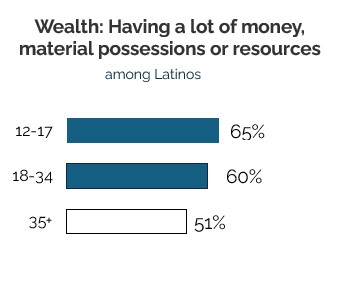
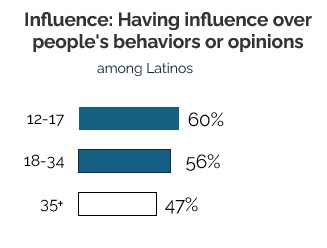
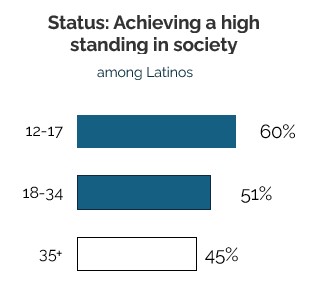
Source: Kantar U.S. MONITOR 2024 (DEI Study)
Why It Matters. Young Latinos will bring their values and expectations to work and will have a growing influence on U.S. workplace culture. By 2030 Latinos will account for 1 of every 5 U.S. workers. And they will likely take a more forceful stance on equity within the workplace than previous generations. Kantar research shows that 81% of Latino employees aged 18-34 say they would consider leaving their company due to lack of inclusion and / or discrimination. In contrast, just 57% of Latino employees age 35+ report the same. Inclusion is about expanding opportunities, and companies have a pivotal role to play. By offering access to networks, role models, and mentorship, they can create new pathways that help break down barriers to success.
MISCONCEPTION #4: Their goal is to assimilate to American culture
While other generations of Latinos felt a need to blend in with the American way, this next generation is rejecting assimilation in favor of a proud, unapologetic blended identity. The reality is Latino youth are motivated by this sense of pride, or orgullo, in their bicultural heritage. They’re rewriting the American Latino narrative as well as injecting fresh energy and perspectives into mainstream U.S. culture. This cultural pride has manifested in record-high levels of cultural engagement among today’s young Latino. They are consuming more content related to their culture and are deepening their ties to heritage. In fact, Kantar data shows that 60% of Latino youth watch content or entertainment related to their cultural background half the time or more in 2024 versus 51% in 2023.

Source: Kantar U.S. MONITOR 2023, 2024 (DEI Study)
Why It Matters. Considering the massive influence Latino youth have economically, socially and culturally, it's important for brands to better engage with this cohort in a way that feels authentic and genuine. To do so, brands need to have a deep understanding of the nuance behind this cultural pride to get it right. Brands that understand this fact—and that create relationships with them—will benefit from their cultural openness, influence and flair for navigating multiple cultures and creating connections.
Moving past the blind spots
Despite the significant tailwinds propelling this generation forward—Latino youth feel disregarded by brands. Representation—both under-representing and mis-representing—is a significant barrier to the success of Latino youth. 68% of Latino youth ages 12 to 34 say that not enough brands do a good job of representing people like them or their community, compared to 57% of their non-Latino peers. Their feeling of being an afterthought has increased year-over-year from 71% in 2022 to 76% in 2024. It is critical to turn this trend around to help young Latinos feel seen, understood and important to the future of America’s brands and businesses.
This report was developed in partnership with the Think Tank, the Latino Donor Collaborative and was supported by four visionary brands: L'Oréal, Capitol One, Colgate Palmolive, and Univision

